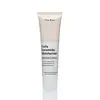What's inside
What's inside
 Key Ingredients
Key Ingredients

 Benefits
Benefits

 Concerns
Concerns

No concerns
 Ingredients Side-by-side
Ingredients Side-by-side

Aloe Barbadensis Leaf Juice
Skin ConditioningWater
Skin ConditioningButylene Glycol
HumectantGlycerin
HumectantCentella Asiatica Extract
CleansingCamellia Sinensis Leaf Extract
AntimicrobialGlycyrrhiza Glabra Root Extract
BleachingSodium Hyaluronate
HumectantBetaine
HumectantTrehalose
HumectantPunica Granatum Extract
AstringentFicus Carica Fruit Extract
HumectantMorus Alba Fruit Extract
AntioxidantLuffa Cylindrica Fruit Extract
Skin ConditioningGinkgo Biloba Nut Extract
Skin ConditioningAloe Barbadensis Leaf Extract
EmollientHydrolyzed Hyaluronic Acid
HumectantHydroxypropyltrimonium Hyaluronate
Hyaluronic Acid
HumectantSodium Hyaluronate Crosspolymer
HumectantRaspberry Ketone
MaskingPolyglutamic Acid
Skin ConditioningMethylpropanediol
SolventAllantoin
Skin ConditioningPanthenol
Skin ConditioningArginine
MaskingBenzyl Glycol
SolventHydroxyacetophenone
AntioxidantEthylhexylglycerin
Skin ConditioningCaprylyl Glycol
EmollientCitric Acid
BufferingDipropylene Glycol
HumectantDipotassium Glycyrrhizate
HumectantCarbomer
Emulsion Stabilising1,2-Hexanediol
Skin ConditioningAloe Barbadensis Leaf Juice, Water, Butylene Glycol, Glycerin, Centella Asiatica Extract, Camellia Sinensis Leaf Extract, Glycyrrhiza Glabra Root Extract, Sodium Hyaluronate, Betaine, Trehalose, Punica Granatum Extract, Ficus Carica Fruit Extract, Morus Alba Fruit Extract, Luffa Cylindrica Fruit Extract, Ginkgo Biloba Nut Extract, Aloe Barbadensis Leaf Extract, Hydrolyzed Hyaluronic Acid, Hydroxypropyltrimonium Hyaluronate, Hyaluronic Acid, Sodium Hyaluronate Crosspolymer, Raspberry Ketone, Polyglutamic Acid, Methylpropanediol, Allantoin, Panthenol, Arginine, Benzyl Glycol, Hydroxyacetophenone, Ethylhexylglycerin, Caprylyl Glycol, Citric Acid, Dipropylene Glycol, Dipotassium Glycyrrhizate, Carbomer, 1,2-Hexanediol
Water
Skin ConditioningGlycerin
HumectantCaprylic/Capric Triglyceride
MaskingPropylene Glycol
HumectantSqualane
EmollientSimmondsia Chinensis Seed Oil
EmollientHydrogenated Phosphatidylcholine
EmulsifyingButyrospermum Parkii Butter
Skin ConditioningCholesterol
EmollientCeramide NP
Skin ConditioningTrehalose
HumectantSodium PCA
HumectantUrea
BufferingGlyceryl Caprylate
EmollientPolyquaternium-51
Skin ConditioningHyaluronic Acid
HumectantTriacetin
AntimicrobialXanthan Gum
EmulsifyingCarbomer
Emulsion StabilisingTriethanolamine
BufferingEthylhexylglycerin
Skin ConditioningWater, Glycerin, Caprylic/Capric Triglyceride, Propylene Glycol, Squalane, Simmondsia Chinensis Seed Oil, Hydrogenated Phosphatidylcholine, Butyrospermum Parkii Butter, Cholesterol, Ceramide NP, Trehalose, Sodium PCA, Urea, Glyceryl Caprylate, Polyquaternium-51, Hyaluronic Acid, Triacetin, Xanthan Gum, Carbomer, Triethanolamine, Ethylhexylglycerin
 Reviews
Reviews

Ingredients Explained
These ingredients are found in both products.
Ingredients higher up in an ingredient list are typically present in a larger amount.
Carbomer is a polymer of acrylic acid. Its main role is to create a gel consistency.
A high amount of carbomer can cause pilling or balling up of products. Don't worry, most products contain 1% or less of carbomer.
Ethylhexylglycerin (we can't pronounce this either) is commonly used as a preservative and skin softener. It is derived from glyceryl.
You might see Ethylhexylglycerin often paired with other preservatives such as phenoxyethanol. Ethylhexylglycerin has been found to increase the effectiveness of these other preservatives.
Glycerin is already naturally found in your skin. It helps moisturize and protect your skin.
A study from 2016 found glycerin to be more effective as a humectant than AHAs and hyaluronic acid.
As a humectant, it helps the skin stay hydrated by pulling moisture to your skin. The low molecular weight of glycerin allows it to pull moisture into the deeper layers of your skin.
Hydrated skin improves your skin barrier; Your skin barrier helps protect against irritants and bacteria.
Glycerin has also been found to have antimicrobial and antiviral properties. Due to these properties, glycerin is often used in wound and burn treatments.
In cosmetics, glycerin is usually derived from plants such as soybean or palm. However, it can also be sourced from animals, such as tallow or animal fat.
This ingredient is organic, colorless, odorless, and non-toxic.
Glycerin is the name for this ingredient in American English. British English uses Glycerol/Glycerine.
Learn more about GlycerinHyaluronic acid is naturally found in healthy skin. It is a humectant, meaning it draws moisture to your skin.
This ingredient helps hydrate, soothe, and protect the skin.
What makes hyaluronic acid so hydrating? It has the capacity to bind or hold large amounts of water.
Fun fact: It is already naturally found in our bodies, such as the fluids of our eyes and our joints.
Studies find this ingredient to have anti-inflammatory and anti-microbial properties. This can help speed up wound-healing.
Hyaluronic acid can be irritating if the molecule has a low-molecular weight, or if the molecules are small.
One study found low-molecular weight hyaluronic acid to be pro-inflammatory, meaning some people may experience irritation. This is because our bodies use hyaluronic acid in the wound-healing process to signal to our bodies, via irritation, that something needs healing.
The same study found high-molecular weight hyaluronic acid to be anti-inflammatory.
These are some other common types of Hyaluronic Acid:
Learn more about Hyaluronic AcidTrehalose is a disaccharide made of two glucose molecules (glucose is sugar!). Trehalose is used to help moisturize skin. It also has antioxidant properties.
As a humectant, trehalose helps draw moisture from the air to your skin. This helps keep your skin hydrated.
Due to its antioxidant properties, trehalose may help with signs of aging. Antioxidants help fight free-radical molecules, unstable molecules that may damage your skin.
In medicine, trehalose and hyaluronic acid are used to help treat dry eyes.
Some animals, plants, and bacteria create trehalose as a source of energy to survive freeze or lack of water.
Learn more about TrehaloseWater. It's the most common cosmetic ingredient of all. You'll usually see it at the top of ingredient lists, meaning that it makes up the largest part of the product.
So why is it so popular? Water most often acts as a solvent - this means that it helps dissolve other ingredients into the formulation.
You'll also recognize water as that liquid we all need to stay alive. If you see this, drink a glass of water. Stay hydrated!
Learn more about Water